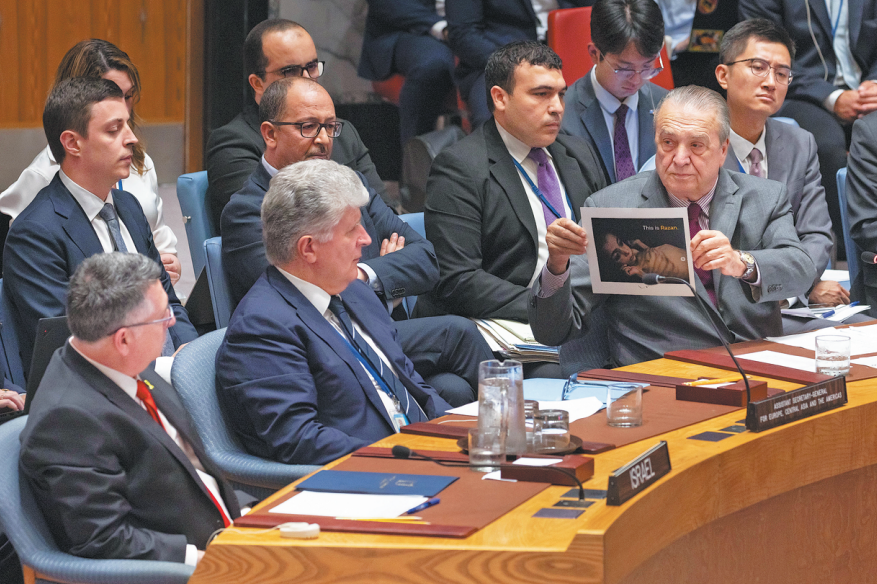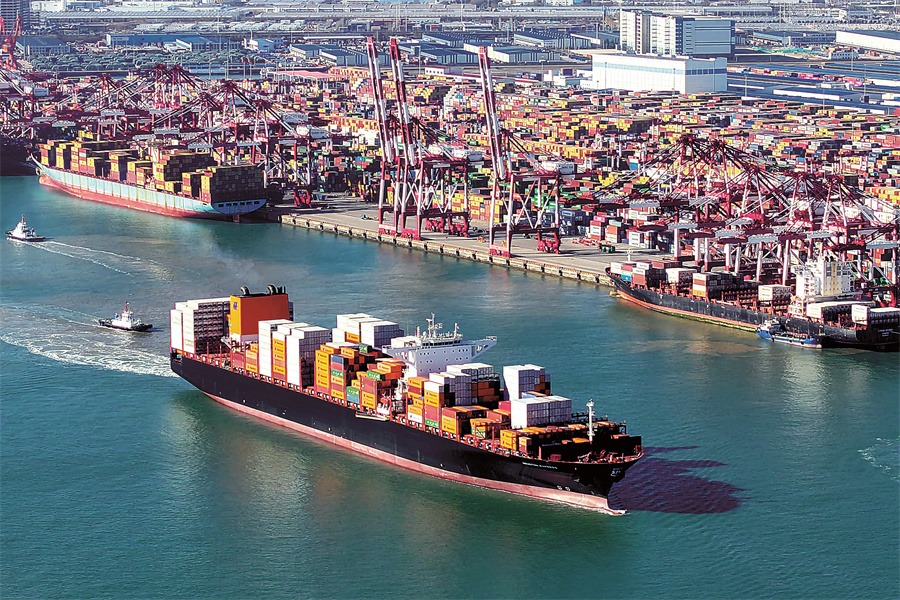Hastened transition
US dollar hegemony is losing ground as a new world of multicurrency settlements comes into being


April 2025 will stand as an inflection point. Rather than lay the foundations for a return of manufacturing to the United States, the so-called reciprocal tariffs launched by the US administration have accelerated the transition away from the dollar-dominated global economic system. The transition isn't the replacement of the dollar with another hegemonic reserve currency. What's underway is a structural dislocation: the decentering of money from empire, and the relocalization of value circuits, anchored in real use value and national currencies and coordinated through a supra-national clearing layer. This is embodied by BRICS+ and a raft of already-in-play institutional and technical infrastructure.
The US' unilateral imposition of "reciprocal tariffs" on most nations followed by a rapid retreat a couple of days later, with the exception of escalations in relation to products from China, revealed some important truths.
First, it exposed a detachment of US fictitious capital value from the real value of economic production systems. Second, systemic fragility became apparent for all to see. Stock prices plummeted, as did the value of the US dollar. Bond yields spiked as holders exited in search of less risky assets. Third, it revealed the capricious nature of US political institutions, for which global institutions and agreements were wantonly jettisoned. Fourth, in the face of a collapse in market sentiment for the dollar and dollar-denominated securities, the administration folded. This suggests that the entire "reciprocal tariffs" move was ill-conceived, anchored more in the affective politics of nostalgia, than in any well-thought through systemic approach to the issues at hand.
The use of the dollar as a means of global trade settlement has been diminishing over the past decade. Almost all of Russia's trade is now settled in Russian rouble, the renminbi and other non-dollar currencies. Over 54 percent of China's trade is now settled in the renminbi. Other countries — particularly BRICS members — are progressively increasing their use of national currencies for cross-border payments. Reduced utility as a means of payment ultimately undermines the dollar's potential to function as a store of value.
Settlements outside of the dollar system are growing, as nations bypass SWIFT and communicate via other data networks. The dollar's role as the final form of value is being hollowed out, not via political decree, but by system evolution and reengineering of where real value is created and settled.
Fictitious capital denominated in the dollar remains in accounting form, but the engine of value has moved. The challenge for significant holders of dollar-denominated fictitious capital is to create and transition to a new system with as little disruption as possible.
For the past decade and a half, ever since the global financial crisis of 2008, we have been witnessing a controlled demolition of the dollar-denominated fictitious capital's supremacy, not through confrontation, but by progressive decentering. The illusion of dominance persists only so long as real value flows through it. When that value is rerouted, systematically, quietly, structurally, the facade collapses without a bang.
A parallel system of value creation and circulation has emerged, and continues to be a work in progress. This system is grounded in real economies of use value.
To support this new circulation network, new multilateral and bilateral institutions have been created. Currency swap facilities have been put into place between China's central bank and counterpart banks in more than 40 countries. Other countries' central banks have been working on similar arrangements. Alternative interbank messaging systems to SWIFT have been established; China's Cross-border Interbank Payment System (CIPS), Russia's SPFS and Iran's Shetab are cases in point. New settlement platforms, such as mBridge are now live, enabling national currency settlements. And now, we also have BRICS Clear in the pipelines, focused on enabling national currency-based settlements among BRICS member states.
The result is that settlements increasingly bypass the US dollar. The need for dollars at the transaction layer diminishes. The dollar is still formally the reserve asset, but less is used in trade and less is held unhedged. More is repackaged, swapped, or stripped of control. As such, the dollar's reserve status becomes symbolic; in form but not in substance. The erosion doesn't require default or inflation; it only requires decentering.
Currency relevance comes from circuits of real use value creation. The real economy starts to settle in other units. For example: oil is traded in the renminbi (priced and settled via Shanghai exchange+CIPS);copper in peso-yuan contracts for South-South trade; and grain in rupee-rouble swaps, with netting systems.
These mechanisms reconnect value to real use, not abstract credit claims. Proceeds from treasuries-collateralized loans are used to build the renminbi liquidity pools, fund commodity-for-yuan trade, or finance real assets (ports, tech, farmland, metals). US treasuries are captive shells, inert in the system, no longer activating real-world flows. Multilateral payment nodes (BRICS Clear, CIPS, SPFS, mBridge) have emerged, clearing outside the dollar loop.
Sovereign and institutional actors redefine value in their own systems. Reserves become diversified baskets tied to trade exposure. Settlement systems align with production/consumption zones, not financial hegemonies. Money creation ties more directly to energy, resource flows, and productive output.
This is the future with BRICS.Here, the dollar isn't overthrown, it's simply decentered. The US government keeps issuing treasuries. There's no risk of formal default; the Fed can always "print". Coupon payments are made. The principal is rolled over. If dollars can be printed indefinitely, then "payment" becomes a tautology. There is no credit risk, but there is also no store-of-value confidence. If it cannot be used to exchange for real use values outside of dollar zones, and aren't universally accepted in payment networks, investors, central banks, and corporations will begin to wonder: what's the point?
And that's precisely what we saw in the market's reaction to the US' erratic and capricious "reciprocal tariffs". The policy is an attempt to assert control over a global system that the US no longer controls. The use of tariffs, sanctions or financial blockades to force alignment accelerates exit, as participants' fears of politicized finance are confirmed. Allies begin hedging their exposure, and the exodus becomes visible.
A new world is already in existence. It is now emerging more clearly from the womb of the dollar hegemony. The new world runs on multicurrency settlements, in which value is anchored in real trade, commodities, production and infrastructure. Financial markets as tools, not truths. April 2025 is an inflection moment, in which the reality of this transition became visible to all.

The author is an adjunct professor at Queensland University of Technology and a senior fellow at the Taihe Institute. The author contributed this article to China Watch, a think tank powered by China Daily.
Contact the editor at editor@chinawatch.cn.


































